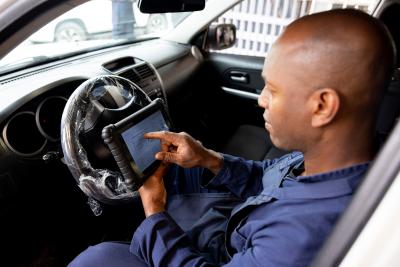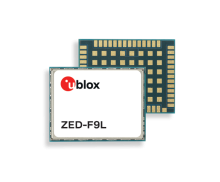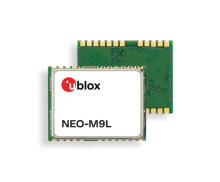
JODY-W6 series
Host-based compact automotive modules
Technology
|
28 Feb 2024

Over the past sixty years, computerized systems in vehicles have evolved. The first electronic control units (ECUs) were designed to control engine functions such as fuel injection and ignition timing. Since then, the functionality of a vehicle's computer hardware has expanded to control key aspects such as the Engine Control Module (ECM), Transmission Control Module (TCM), Anti-Lock Braking System (ABS) module, and many others.
However, hardware is not the only computerized system that has provided added functionality. Although it continues to evolve, the software of a vehicle's computer has received the most attention from the automotive industry to offer more functionality to the user.
When experts talk about a software-defined vehicle (SDV), they refer to many functions and features that were once performed by hardware and have now been replaced or enhanced by software.
In a software-defined vehicle, the software plays a central role in controlling various functions beyond traditional engine control. Some examples include infotainment systems, driver assistance technologies, autonomous driving capabilities, connectivity, and over-the-air updates for software enhancements.
The concept involves using powerful onboard computers and sensors that collect data from the vehicle and its environment and process it to make vehicle control decisions.
Software-defined vehicle architecture is now a term used by automotive companies to refer to the various functions controlled and managed by the vehicle’s software.
The SDV provides the vehicle with an architecture that enables updates similar to those offered by a laptop, desk computer, or smartphone. The software-defined vehicle architecture is the foundation that enables the over-the-air update capability.
Based on this, updating a vehicle's computer systems and adding features is now possible without taking it to a service center or repair shop. While the comparison to a computer or a smartphone may sound reductive, as a vehicle's software is far more complex than either, it helps to illustrate the key benefits of an SDV.
Some of the main differences between the architecture of a traditional vehicle and an SDV are as follows:
| Centricity of hardware and software | Flexibility and upgradability | Integration of advanced technologies | Cybersecurity | |
| Traditional vehicle architecture | Engine management, brakes, and steering rely on mechanical and electrical components. |
Limited in terms of functionality and features. Once a vehicle leaves the factory, it can only be modified through physical upgrades. | Limited integration for driver assistance systems and infotainment, for example. | Virtually no action is required as updates are performed at service centers. |
| SVD architecture |
The software controls the functionality, features, and capabilities of the vehicle. Perception, decision-making, and autonomous driving are all controlled by sophisticated algorithms. | New features, performance enhancements, and new functionalities can be added via over-the-air (OTA) software updates. | Ability to integrate autonomous driving systems, artificial intelligence (AI), machine learning, and connectivity features. | Necessary measures to protect against threats. The advantage is that they can be updated via OTA. |
The benefits of a software-defined vehicle are many. These systems are more agile and flexible because they can be updated rapidly. A vehicle can even be enhanced even after it leaves the production plant. They also improve the overall user experience by allowing for feature customization and personalization.
Improved connectivity is another factor that enables real-time data exchange, which translates into communication with the environment and the ability to monitor the vehicle remotely.
Software-defined vehicles reduce the hardware costs associated with manufacturing, repairing, and replacing components. In this new scenario, predictive maintenance can be used to continuously maintain the healthy performance of vehicles to keep them on the road. Ultimately, this would maximize the life and value of the vehicle over the years.
Environmental impact, safety, and remote diagnostics are other benefits a software-defined vehicle can provide.
Moreover, mobility services, e-mobility, and autonomous driving will benefit from improvements in vehicle software.
The biggest concern with software-defined vehicles is cybersecurity. A vehicle's software is vulnerable to cyber-attacks. This poses a threat to the integrity of the vehicle, which can lead to unauthorized access, data breaches, and even control of the vehicle, potentially endangering the safety of its occupants.
Other limitations include software complexity, software development costs, and dependence on software updates. Software architectures become more complex every year and vehicles inevitably become more dependent on them. Managing this software complexity is challenging because it will likely lead to problems, failures, and bugs.
Finally, regular updates are part of the software-defined vehicle cycle to fix bugs, improve performance, and add new features. But just like any desktop or laptop computer, security and performance can be compromised if security updates are neglected.
The automotive industry is highly regulated. Extensive testing and validation are necessary before any new functionality is available to users. Some components of software development in this scenario require regular compliance with safety standards and regulatory requirements.
As mentioned above, the initial cost of a software-defined vehicle is higher than that of a traditional vehicle. This is mainly due to the need to add more complex functions to the vehicle’s architecture.
However, the new architecture of SDVs allows for the consolidation of some components. This results in some savings because everything is centralized, and fewer cables and ECUs are in the vehicle.
In the future, the costs can be amortized over the years. Consumers will benefit from it in the long run and will have access to up-to-date information for longer.
Software-defined vehicles will bring significant advances to the automotive industry. The automotive industry is setting to produce more software-defined vehicles and move away from hardware-based vehicles. In the future, these vehicles will be fundamental to autonomous and eco-friendly driving. They will also be easier to integrate into smart city environments.
u-blox specializes in GNSS positioning technologies that scale from standard to high accuracy to high integrity and safety, ensuring the highest standards in software development, especially for safety-critical use cases with a strong focus on security. Accurate positioning is essential for SDVs to sense the environment, determine their position, and navigate safely.
Furthermore, u-blox's wireless communication modules enable OTA updates in SDVs by connecting wirelessly to a Wi-Fi hotspot and downloading critical updates without the need for cellular connectivity. These updates allow manufacturers to remotely deliver software patches, security updates, and new vehicle features, ensuring an always up-to-date software solution.
Essentially, u-blox's positioning and wireless communication technologies play a critical role in enabling the functionality and capabilities of software-defined vehicles by providing accurate positioning, reliable communication for OTA updates, and cybersecurity solutions that contribute to safer, smarter, and more connected transportation systems.
The software-defined vehicle trend carries many important implications for the future of driving. It will spearhead the automotive industry for the following years, if not decades, to come.
Talk to one of our experts today and learn more about our software-defined vehicle solutions.

Host-based compact automotive modules

Host-based automotive modules with Wi-Fi 6E (802.11ax) and Bluetooth 5.3

Sub-meter dead reckoning GNSS with integrated IMU sensors

Multi-mode LTE Cat 4 modules in smallest form factor

u-blox M9 automotive dead reckoning module with 3D sensors